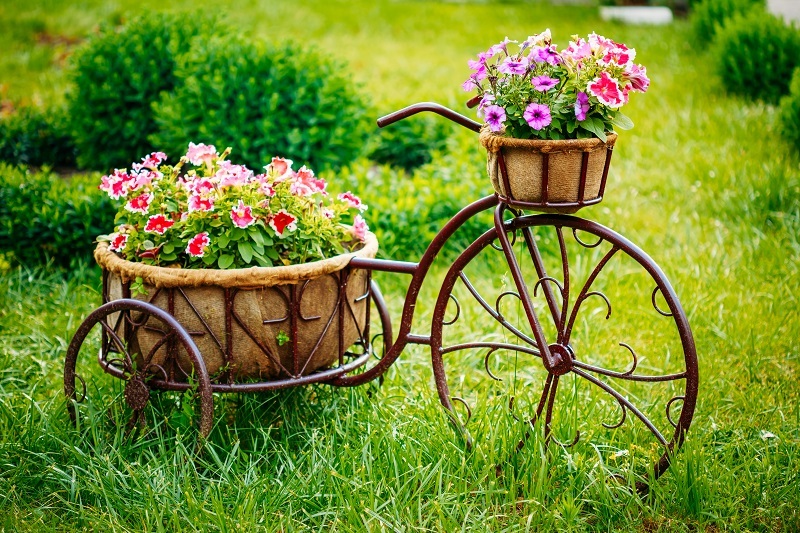Creating the Perfect Environment for Hydrangeas
Posted on 14/08/2025
Creating the Perfect Environment for Hydrangeas: A Comprehensive Guide
If you want to enjoy show-stopping blooms from your hydrangeas, it's essential to create a habitat where these beloved shrubs can thrive. Hydrangeas are renowned for their large, colorful flowers and elegant foliage, making them a highlight in any garden. But achieving long-lasting, healthy growth requires understanding their unique preferences. This guide will walk you through the optimal conditions for growing hydrangeas, from soil and sunlight to watering and maintenance, ensuring your landscape sparkles with their stunning displays.

Understanding Hydrangeas: What Makes Them Unique?
Before we dive into creating the ideal environment for hydrangeas, let's explore what makes these plants so special. Hydrangeas belong to the Hydrangeaceae family, and their most popular species include:
- Hydrangea macrophylla (bigleaf hydrangea)
- Hydrangea paniculata (panicle hydrangea)
- Hydrangea arborescens (smooth hydrangea)
- Hydrangea quercifolia (oakleaf hydrangea)
- Climbing hydrangea (Hydrangea petiolaris)
Each type has distinct needs, but there are many similarities in how they grow best. Understanding these requirements is key to cultivating robust and beautiful hydrangeas.
Why Gardeners Love Hydrangeas
- Stunning, long-lasting blooms
- Wide range of flower colors and forms
- Attractive foliage throughout the season
- Versatility for sun or shade gardens
Selecting the Right Location for Your Hydrangeas
Light Requirements: Sun vs. Shade
Most hydrangeas prefer partial shade, meaning they flourish in spots that receive morning sun and afternoon shade. Full afternoon sun, especially in hot climates, can cause leaves to scorch and blooms to wilt. However, some varieties like Hydrangea paniculata tolerate and even thrive in more sunlight.
- Morning sun with afternoon shade: Best for bigleaf and smooth hydrangeas
- Mostly sunny to dappled shade: Suitable for panicle and climbing hydrangeas
- Deep shade*: Generally not recommended, as it reduces flowering.
*Deep shade may result in limited flowering capacity.
Protection from Wind and Extreme Temperatures
For optimal hydrangea performance, choose a site sheltered from strong winds and harsh sunlight. Fences, trees, or buildings can provide the necessary protection, especially in northern regions where winter winds are an issue.
- Windbreaks help reduce water loss from leaves and protect delicate flowers.
- Avoid frost pockets: Low-lying areas where cold air settles can damage blossoms and buds.
- Zones 3-9: Check your specific hydrangea's hardiness and plant accordingly.
The Best Soil for Growing Stunning Hydrangeas
Soil Composition and Structure
Hydrangeas thrive in well-draining, fertile soils that are rich in organic matter. Heavy clay or sandy soils should be amended before planting.
- Loamy soil is the sweet spot -- it holds moisture but drains well.
- Compost and well-rotted manure are excellent additives for boosting fertility and structure.
- Avoid waterlogged conditions, as hydrangeas are susceptible to root rot.
Soil pH and Flower Color: A Unique Hydrangea Trait
Perhaps one of the most intriguing characteristics of bigleaf hydrangeas is their ability to change flower color based on soil pH:
- Acidic soil (pH below 6): Encourages blue blooms
- Neutral to alkaline soil (pH above 6.5): Produces pink or purple flowers
If you want to experiment with color, use soil amendments:
- Aluminum sulfate for blue flowers (lowers pH)
- Garden lime for pink flowers (raises pH)
Test your soil pH before planting--soil test kits are widely available and easy to use.
Soil Preparation Steps
- Test and amend the soil as needed for optimal pH (5.5-6.5 for most hydrangeas).
- Loosen the soil to a depth of 18-24 inches to encourage strong root growth.
- Work in 2-4 inches of compost or well-rotted manure before planting.
- Mulch heavily with organic matter after planting (2-3 inches deep) to retain moisture and moderate soil temperature.
Watering Hydrangeas: Getting the Balance Right
Hydration Needs
Consistent moisture is vital for healthy hydrangea growth and prolific blooms. Hydrangeas have shallow roots that dry out quickly. Proper irrigation can mean the difference between lush foliage and wilted, unhappy plants.
- Keep soil consistently moist, especially during hot, dry spells and the first two years after planting.
- Avoid waterlogging: Ensure good drainage to prevent root diseases.
Tip: Water deeply at the base of the plant in the early morning to minimize evaporation and fungal diseases.
Summer Care: Be Attentive
During peak summer, hydrangeas may require supplemental watering 2-3 times per week. Mulching (such as using shredded bark or compost) helps conserve moisture and keeps roots cool and healthy.
Fertilizing Hydrangeas for Optimal Growth
How and When to Fertilize
- Apply a balanced, slow-release fertilizer (such as 10-10-10 or 14-14-14) in early spring as new growth appears.
- Mid-summer feeding can be beneficial for reblooming varieties, but avoid fertilizing too late in the season, as this can stimulate tender growth prone to frost damage.
- Avoid high-nitrogen fertilizers, as too much nitrogen encourages lush leaves at the expense of flowers.
Over-fertilizing can burn roots or produce excessive, leggy growth. Always follow the manufacturer's application instructions.
Pruning and Maintenance: Keeping Your Hydrangeas Healthy
When to Prune
Proper pruning encourages vigorous flowering and controls the plant's size and shape. Timing and technique depend on your hydrangea type.
- Bigleaf and oakleaf hydrangeas: Prune immediately after flowering, as they bloom on old wood.
- Panicle and smooth hydrangeas: Prune in late winter or early spring before new growth, as they flower on new wood.
Pruning Steps
- Remove any dead, damaged, or diseased stems first.
- Cut back stems as needed to control size without removing too much old wood in the case of bigleaf hydrangeas.
- Shape the plant to encourage air circulation and light penetration.
Additional Maintenance Tips
- Mulch annually to suppress weeds and retain moisture.
- Apply winter protection (such as burlap or extra mulch) for less hardy varieties in cold climates.
- Monitor for pests and diseases: Aphids, spider mites, and powdery mildew can pose problems but are usually manageable with proper care.
Common Hydrangea Problems and How to Prevent Them
Even in the perfect environment, hydrangeas may face a few challenges. Recognizing and addressing issues quickly ensures long-term plant health.
- Wilting leaves: Usually a sign of insufficient water or excessive heat. Increase watering and provide afternoon shade if possible.
- Browning leaf edges: Often caused by too much sun or wind. Move to a more sheltered area or add shade.
- No flowers: This can result from improper pruning (removing flower buds), insufficient light, too much nitrogen, or winter bud injury.
- Yellow leaves: Can be a sign of nutrient deficiency or poor drainage. Test soil and adjust fertilization or drainage as needed.
Hydrangea Planting Guide: Step-By-Step
- Choose your location: Look for well-drained soil with morning sun and afternoon shade.
- Test and amend your soil: Adjust pH and add organic matter as needed.
- Dig a hole: Twice as wide and just as deep as the root ball.
- Set your hydrangea: At the same depth it was growing in its nursery pot. Backfill with enriched soil.
- Water thoroughly: Soak the soil well after planting to ensure the roots are established.
- Mulch: Apply a 2-3 inch layer of organic mulch to retain moisture and regulate soil temperature.
Hydrangea Companion Planting and Landscape Design
Creating the perfect garden microclimate means surrounding your hydrangeas with beneficial companions. Some ideal choices include:
- Hostas: Their bold foliage offers beautiful contrasts in texture and color.
- Ferns: Great for shade gardens and add a lush understory effect.
- Astilbe: Provides feathery plumes in complementary shades.
- Heuchera (Coral Bells): Adds pops of color and interest at the base of hydrangeas.
- Japanese Forest Grass: Offers a soft, flowing accent to hydrangea beds.
Using a variety of leaf forms and heights not only creates visual appeal but can improve soil structure and microclimate around your hydrangeas.

FAQ: Achieving the Best Results for Hydrangea Care
How do I get my hydrangeas to bloom more?
Ensure adequate sunlight (morning is best), fertilize appropriately, and prune at the correct time. Avoid removing old wood on varieties that bloom from last year's growth.
Can hydrangeas grow in containers?
Yes! Select compact varieties for pots, use high-quality potting soil, provide consistent moisture, and move containers to sheltered spots in winter if your climate is harsh.
When is the best time to plant hydrangeas?
Early spring or fall is ideal, giving roots time to establish before the stress of summer heat or winter cold.
How do I make hydrangea blooms pink or blue?
Adjust soil pH: acidic for blue (add aluminum sulfate), alkaline for pink (add garden lime), and monitor results annually.
Conclusion: Your Blueprint for Beautiful Hydrangeas
Creating the perfect environment for hydrangeas is both rewarding and accessible. By understanding their preferences for light, soil, moisture, and nutrients, any gardener can produce lush, thriving shrubs that reward you with stunning blooms season after season. Remember to start with the right site, nurture your plants with care, monitor their needs, and enjoy the process--your garden will thank you with a dazzling display of hydrangeas for years to come.
Ready to transform your outdoor space into a hydrangea haven? Follow this comprehensive guide to ensure your success, and soon you'll be the envy of your neighborhood, with sublime hydrangea blooms from early summer to fall!
Latest Posts
Explore Your Birth Flower and the Secrets It Holds About You
Creating the Perfect Environment for Hydrangeas
Maintain Poinsettia Freshness Longer
Blooming Birthday Gifts They'll Adore
The fascinating world of birth month flowers and their meanings






